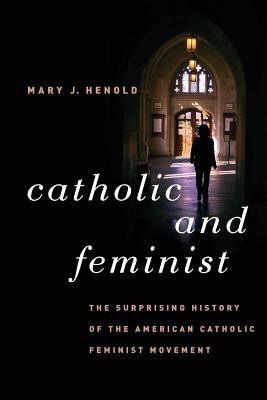
- We will send in 10–14 business days.
- Author: Mary J Henold
- Publisher: University of North Carolina Press
- ISBN-10: 0807873535
- ISBN-13: 9780807873533
- Format: 15.5 x 23.1 x 2.3 cm, softcover
- Language: English
- SAVE -10% with code: EXTRA
Reviews
Description
In 1963, as Betty Friedan's Feminine Mystique appeared and civil rights activists marched on Washington, a separate but related social movement emerged among American Catholics, says Mary Henold. Thousands of Catholic feminists--both lay women and women religious--marched, strategized, theologized, and prayed together, building sisterhood and confronting sexism in the Roman Catholic Church. In the first history of American Catholic feminism, Henold explores the movement from the 1960s through the early 1980s, showing that although Catholic feminists had much in common with their sisters in the larger American feminist movement, Catholic feminism was distinct and had not been simply imported from outside.
Catholic feminism grew from within the church, rooted in women's own experiences of Catholicism and religious practice, Henold argues. She identifies the Second Vatican Council (1962-65), an inspiring but overtly sexist event that enraged and exhilarated Catholic women in equal measure, as a catalyst of the movement within the church. Catholic feminists regularly explained their feminism in terms of their commitment to a gospel mandate for social justice, liberation, and radical equality. They considered feminism to be a Christian principle.
Yet as Catholic feminists confronted sexism in the church and the world, Henold explains, they struggled to integrate the two parts of their self-definition. Both Catholic culture and feminist culture indicated that such a conjunction was unlikely, if not impossible. Henold demonstrates that efforts to reconcile faith and feminism reveal both the complex nature of feminist consciousness and the creative potential of religious feminism.
EXTRA 10 % discount with code: EXTRA
The promotion ends in 11d.09:24:19
The discount code is valid when purchasing from 10 €. Discounts do not stack.
- Author: Mary J Henold
- Publisher: University of North Carolina Press
- ISBN-10: 0807873535
- ISBN-13: 9780807873533
- Format: 15.5 x 23.1 x 2.3 cm, softcover
- Language: English English
In 1963, as Betty Friedan's Feminine Mystique appeared and civil rights activists marched on Washington, a separate but related social movement emerged among American Catholics, says Mary Henold. Thousands of Catholic feminists--both lay women and women religious--marched, strategized, theologized, and prayed together, building sisterhood and confronting sexism in the Roman Catholic Church. In the first history of American Catholic feminism, Henold explores the movement from the 1960s through the early 1980s, showing that although Catholic feminists had much in common with their sisters in the larger American feminist movement, Catholic feminism was distinct and had not been simply imported from outside.
Catholic feminism grew from within the church, rooted in women's own experiences of Catholicism and religious practice, Henold argues. She identifies the Second Vatican Council (1962-65), an inspiring but overtly sexist event that enraged and exhilarated Catholic women in equal measure, as a catalyst of the movement within the church. Catholic feminists regularly explained their feminism in terms of their commitment to a gospel mandate for social justice, liberation, and radical equality. They considered feminism to be a Christian principle.
Yet as Catholic feminists confronted sexism in the church and the world, Henold explains, they struggled to integrate the two parts of their self-definition. Both Catholic culture and feminist culture indicated that such a conjunction was unlikely, if not impossible. Henold demonstrates that efforts to reconcile faith and feminism reveal both the complex nature of feminist consciousness and the creative potential of religious feminism.


Reviews